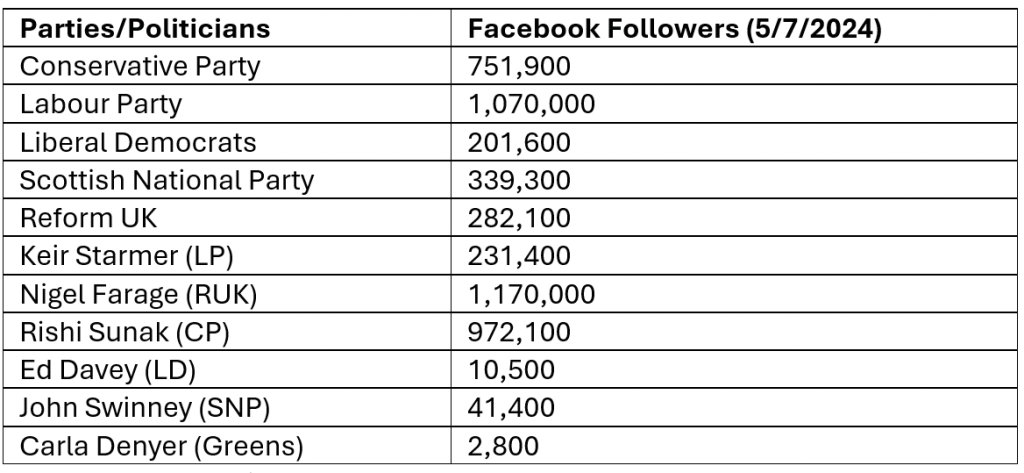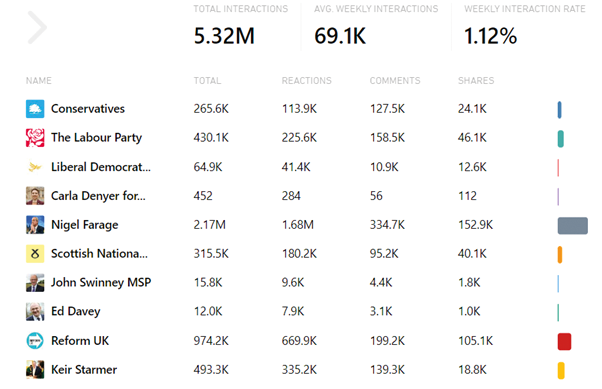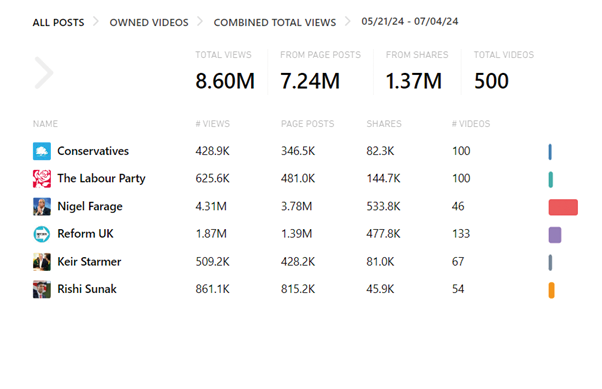
Prof Andrea Carson
2024 visiting research fellow at the Reuters Institute for the Study of Journalism, University of Oxford and a Professor of Political Communication at La Trobe University, Australia.
Twitter/X: @andrea_carson
Email: a.carson@latrobe.edu.au

Dr Felix M. Simon
Research Fellow in AI and News at the Reuters Institute for the Study of Journalism, University of Oxford.
Twitter/X: @_FelixSimon_
Email: felix.simon@oii.ox.ac.uk

UK Election 2024
Section 6: The digital campaign
62. Local news and information on candidates was insufficient (Dr Martin Moore, Dr Gordon Neil Ramsay)
63. The Al election that wasn’t – yet (Prof Helen Margetts)
64. Al-generated images: how citizens depicted politicians and society (Niamh Cashell)
65. The threat to democracy that wasn’t? Four types of Al-generated synthetic media in the General Election (Dr Liam McLoughlin)
66. Shitposting meets Generative Artificial Intelligence and ‘deep fakes’ at the 2024 General Election (Dr Rosalynd Southern)
67. Shitposting the General Election: why this campaign felt like one long meme (SE Harman, Dr Matthew Wall)
68. Winning voters’ hearts and minds… through reels and memes?! How #GE24 unfolded on TikTok (Dr Aljosha Karim Schapals)
69. Debating the election in “Non-political” Third Spaces: the case of Gransnet (Prof Scott Wright et al)
70. Which social networks did political parties use most in 2024? (Dr Richard Fletcher)
71. Facebook’s role in the General Election: still relevant in a more fragmented information environment (Prof Andrea Carson, Dr Felix M. Simon)
72. Farage on TikTok: the perfect populist platform (Prof Karin Wahl-Jorgensen)
While pundits and pollsters were accurately predicting Rishi Sunak would be trounced after calling the snap general election on 22nd May, it didn’t slow down his share of public attention on Facebook.
Of the 5.2 million public Facebook interactions with the major parties and candidates since the election was called, Sunak stood out – although admittedly getting more HAHA (49,510) than LOVE (33,257) interactions. That was until Reform UK leader Nigel Farage entered the fray on 3rd June. Farage quickly dominated Facebook political traffic, with 2.12 million interactions, or put another way, 40 % of the total of all Facebook traffic of the major parties and candidates during his campaign.
Facebook data is a useful measure of online public engagement in the campaigns because it is the most widely used social media platform in Britain. According to the 2024 Reuters Institute Digital News Report, 63 % of Britons use it to consume general online content (63%) and about one in five (17%) specifically for news.
But Facebook tends to appeal to an older audience and as this special election series shows us, it is only one part of the overall campaign story. Despite headlines heralding politician’s massive online advertising spend and audience reach on social media, this was not a social media election. But nor was it a mainstream media election.
What is clear about the 2024 UK election result is that astute political campaigners understand the highly fragmented media environment and will tailor their messages across a variety of media platforms with paid and organic (free) content. While Facebook still plays a role in political actors’ overall election communication strategy by amassing followers (as Table 1 shows), Meta’s deliberate move away from politics and its deprioritisation of news suggests its influence on public opinion in politics is waning.

Source: Authors using Facebook data
For example, our analysis of Meta’s CrowdTangle data of the race between Sunak and his major political rival, the Labour Party’s Sir Keir Starmer, finds Sunak captivated the older Facebook audience with more than half a million interactions (569.3k), just ahead of Starmer (482.4k) during the six-week campaign (see Figure 1).

Source: CrowdTangle; Notes: Facebook interaction rates is the total of all reactions, comments and shares; it is a separate measure from video views.
Similarly for Farage. While we cannot be certain that his extraordinarily large audience share on Facebook was not inflated by bots and artificial activity, it may have bolstered his profile and helped deliver his first House of Commons seat after seven failed attempts.
While the major parties and candidates recognise the need to have a Facebook presence as Table 1 shows with their number of followers, they use the platform in different ways.
A deeper dive into the CrowdTangle data reveals different approaches in communication styles between the parties and candidates. Despite its leader’s audience share, the Conservative party, attracted much less attention on the platform with about a quarter of a million Facebook interactions (259.1k) compared to Starmer’s Labour party (423.5k). Why was this? It may be that despite the Presidential styled campaigns, voters still recognise that they are voting for a party and a local candidate – and Labour was clearly more popular. But it might also have something to do with the smart use of online video and its appeal to younger audiences. While both major parties posted 100 videos each during the campaign, Labour attracted more video views and kept eyeballs engaged for longer by posting on average lengthier reels —the sweet spot being between one to two minutes— with more policy content compared to the Conservatives who opted typically for shorter videos under one minute (see Figure 2).

Source: CrowdTangle
The latest Digital News Report finds across nations that audiences are adding more video to their news diets, particularly younger audiences. This public preference for video content seems consistent during the election campaign. Of the 8.6 million audience views of political parties and candidates’ Facebook videos, it is Starmer (509.2k) and Labour (625.6k) and Farage (4.3M) and Reform UK (1.8M) that garner almost 85 % of the video viewing audience by posting longer clips.
The General Election has shown that Facebook continues to play an important role in parties’ campaign strategies and in the way people engage with politics and information about the election. However, it faces increasing competition from other platforms – and traditional news sources.
